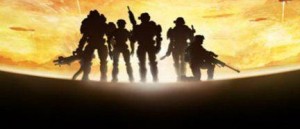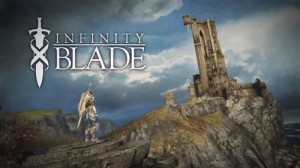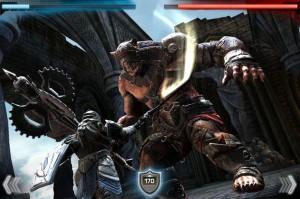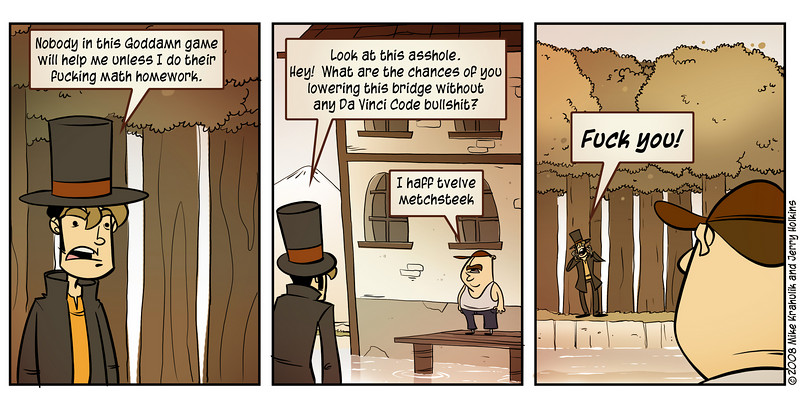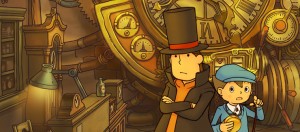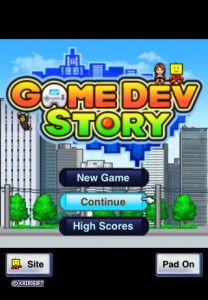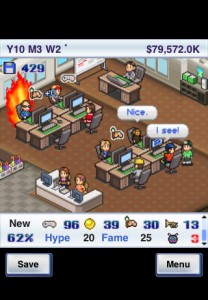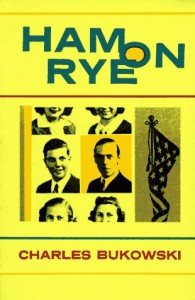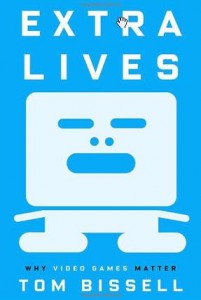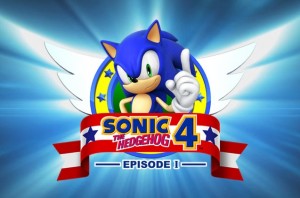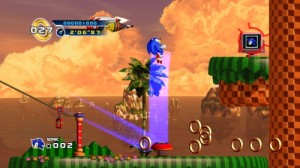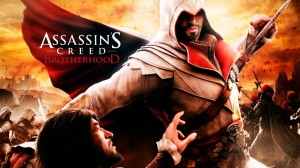 Assassin’s Creed: Brotherhood isn’t quite what I’d hoped for, but that seems to be a running theme with this series. It’s hard to say whether or not I would suggest it, because your takeaway is going to depend largely on whether or not you want more of the same. Brotherhood doesn’t stray far from Assassin’s Creed 2, and that’s either a good thing or a bad thing depending on where you’re coming from.
Assassin’s Creed: Brotherhood isn’t quite what I’d hoped for, but that seems to be a running theme with this series. It’s hard to say whether or not I would suggest it, because your takeaway is going to depend largely on whether or not you want more of the same. Brotherhood doesn’t stray far from Assassin’s Creed 2, and that’s either a good thing or a bad thing depending on where you’re coming from.
Before I get too deep into my feelings on Assassin’s Creed: Brotherhood I want to take a look back at my feelings on the first two games. When I finished Assassin’s Creed 1 I wrote the following at The Gamer’s Quarter:
Scaling the office building never happened in the second Assassin’s Creed either and the game actually had you spend even less time in the present than its predecessor, but it was a much better game. Here’s what I had to say about it:
Again, Assassin’s Creed: Brotherhood isn’t quite the sequel I expected. Rather than having a leap as big as the one between the first and the second, it’s basically an expansion pack to the second game with new missions, a different story, and a Farm Ville-like real-time Assassin training mini-game integrated into it. This wouldn’t be so bad, but surprisingly early on Brotherhood begins to feel like busywork. This feeling comes from the lack of a strong story to string you through from location to location, and a near-removal of the leaping between time periods that makes finally completing story chapters so rewarding.
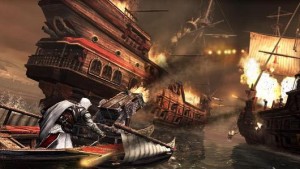 What I’d wished for most in the first game – Desmond finally waking up to his ancestor’s powers in modern times – is the thing Brotherhood gets totally right. He’s finally fully capable of scaling walls, leaping from place to place, and potentially stabbing some dudes in the neck. Too bad there’s never any enemies for him to try his knife out on. Brotherhood gets away with modern day action on-the-cheap by having Desmond travel to the same locations that Ezio goes to in the past. Reusing the assets was certainly done at least partially out of budgetary concerns and laziness, but experiencing an area through both past and future eyes is something I enjoy immensely. It makes the world feel more tangible, even if it is just a series of platforms to re-navigate.
What I’d wished for most in the first game – Desmond finally waking up to his ancestor’s powers in modern times – is the thing Brotherhood gets totally right. He’s finally fully capable of scaling walls, leaping from place to place, and potentially stabbing some dudes in the neck. Too bad there’s never any enemies for him to try his knife out on. Brotherhood gets away with modern day action on-the-cheap by having Desmond travel to the same locations that Ezio goes to in the past. Reusing the assets was certainly done at least partially out of budgetary concerns and laziness, but experiencing an area through both past and future eyes is something I enjoy immensely. It makes the world feel more tangible, even if it is just a series of platforms to re-navigate.
Another surprisingly successful addition to Brotherhood is the aforementioned Farmville-like Assassin rearing mini-game. Although this sounds like a recipe for disaster, the way it’s implemented is rewarding in the same way games like Farmville tend to be – you’re given cool stuff just for hanging out. In Assassin’s Creed: Brotherhood, only time playing the game is taken into consideration, but the countless optional missions make this time speed by. This is both a blessing and a curse though, as these optional missions and mini-games add to the feeling of busywork that I’ve mentioned above. It’s hard to say whether the payoff is worth it, but the addictive “just one more” feeling is effective nonetheless.
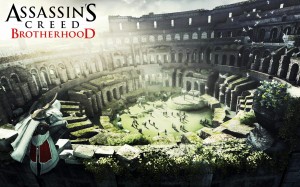 The biggest failure of Brotherhood is the plot itself. It feels like an incidental subplot that might have taken place during Assassin’s Creed 2 that has been stretched out to span an entire game. The first few hours are a confusing mess, and by the time it finally settles into a groove you’re left feeling like a pawn in a war that never mattered. Assassin’s Creed 2 strikes the perfect balance between personal and political, but Brotherhood never gets around to feeling personal and suffers for it.
The biggest failure of Brotherhood is the plot itself. It feels like an incidental subplot that might have taken place during Assassin’s Creed 2 that has been stretched out to span an entire game. The first few hours are a confusing mess, and by the time it finally settles into a groove you’re left feeling like a pawn in a war that never mattered. Assassin’s Creed 2 strikes the perfect balance between personal and political, but Brotherhood never gets around to feeling personal and suffers for it.
It’s interesting to go back and look at how Brotherhood measures up to what I wanted from the first few games. Had I not played the second one it might have been amazing, but as is, it was merely good. With my time being split between family, making games, and playing them this isn’t always enough any more. As for what I want from Assassin’s Creed 3, I predict that it won’t be the dramatic improvement in design that I want, you still won’t spend enough time playing as Desmond in modern times, it will continue to take place in a European city that I could care less about, and that whatever it ends up being I’ll play all the way through it, whining at least a bit about what I hoped it would be.

